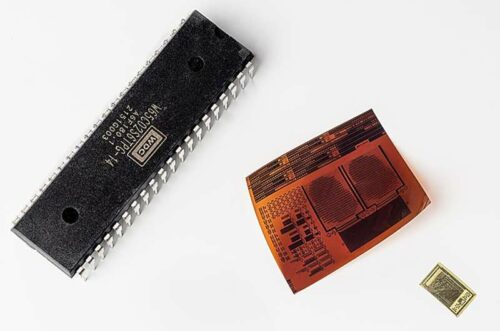Discover how a shift to the foundry business model, traditionally reserved for silicon chip production, is revolutionizing the world of flexible electronics.

The foundation of modern computing relies heavily on silicon chips, epitomizing the “oil” of the digital era. However, the recent chip shortage crisis underscores the fragility of this reliance. Conventional silicon chips, while pivotal, lack mechanical flexibility, posing limitations in certain applications. In contrast, the realm of flexible electronics, propelled by thin-film transistor (TFT) technology, offers promising alternatives. TFTs boast a spectrum of potential applications, spanning from wearable health monitors to bendable displays and IoT devices. Despite advancements, TFT technology remains underutilized, primarily serving in display integration for smartphones and other gadgets.
To unlock the full potential of TFTs and foster innovation, a shift akin to the foundry business model of silicon chip production is proposed. This model streamlines mass production in semiconductor fabrication plants. It empowers chip designers by granting access to advanced manufacturing processes. Kris Myny, a professor at KU Leuven and imec, advocates for extending this model to thin-film electronics. Their research demonstrates the feasibility by successfully producing a TFT-based microprocessor through two foundries. Published in Nature, their study showcases the adaptability of the foundry model beyond conventional silicon.
Advancing Flexibility in Chip Design
The team’s creation, a reincarnation of the MOS 6502 microprocessor, epitomizes the potential of flexible electronics. Manufactured on substrates using different TFT technologies, the chip exemplifies a multi-project approach, enabling diverse chip designs on a single platform. Thin, measuring less than 30 micrometers, the microprocessor opens doors to various applications. Its flexibility makes it ideal for medical wearables, offering comfort and functionality surpassing traditional silicon-based counterparts.
While the performance of the microprocessor may not rival modern chips, its creation marks a significant step in flexible chip design. Myny emphasizes that the aim is not to compete with silicon but rather to catalyze innovation in flexible electronics. The team claims that adopting the foundry model for thin-film electronics heralds a new era of possibilities. By democratizing access to advanced manufacturing, it paves the way for groundbreaking innovations in wearable technology and beyond.





